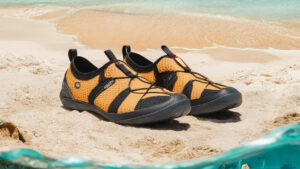Yes, trunk bike racks are safe when installed and used correctly. They provide a secure and reliable way to transport bikes on vehicles, but it is important to follow the manufacturer’s guidelines for proper installation and weight limits.
Trunk bike racks offer a convenient and cost-effective solution for transporting bicycles, whether for a family outing or a solo adventure. These racks are easy to install and remove, making them a popular choice for many cyclists. However, it’s crucial to ensure that the rack is compatible with your vehicle and that the bikes are securely fastened to prevent any accidents or damage while on the road.
In this blog, we will explore the safety, benefits, and considerations of using trunk bike racks for your outdoor excursions.
Introduction To Trunk Bike Racks
Trunk bike racks are a convenient option for transporting bikes, but safety concerns should be considered. While trunk racks can be safe when installed and used correctly, there is a risk of damage to the vehicle’s finish and potential for bikes to sway during transit.
Proper installation and regular checks can help ensure safe and secure transportation.
Popularity Of Trunk Bike Racks
Trunk bike racks are a popular choice for many cyclists.
They are versatile, affordable, and easy to install on most vehicles.
Whether you are a casual rider or a seasoned cyclist, a trunk bike rack can be a convenient option.
The Concern For Safety And Security
When using a trunk bike rack, it is essential to prioritize safety and security.
Proper installation and regular checks are crucial to ensure your bike is securely mounted.
Being mindful of weight limits and road conditions can help prevent accidents.
Types Of Trunk Bike Racks
When it comes to carrying bikes on your car, trunk bike racks are a popular choice. They are easy to install, affordable, and can carry multiple bikes at once. However, the safety of trunk bike racks is a common concern among cyclists. In this article, we will discuss the types of trunk bike racks and whether they are safe to use.
Strap-on Trunk Racks
Strap-on trunk racks are the most common type of trunk bike racks. They attach to the trunk of your car using adjustable straps and hooks. These racks are lightweight, portable, and can hold up to three bikes. However, they do have some drawbacks. The straps can damage your car’s paint, and the bikes can sway during transport, potentially causing damage to your car or the bikes.
Platform Trunk Racks
Platform trunk racks are a newer type of trunk bike rack that has gained popularity in recent years. They feature a platform that holds the bikes in place, rather than hanging them from the frame. This design provides better stability and reduces the risk of damage to your car or the bikes. Platform trunk racks are also easier to load and unload than strap-on racks, as you don’t have to lift the bikes as high.
Overall, both strap-on and platform trunk bike racks can be safe to use, as long as you follow the manufacturer’s instructions and take proper precautions. Before purchasing a trunk bike rack, make sure it is compatible with your car and the bikes you plan to carry. Additionally, always double-check that the rack and bikes are securely attached before hitting the road.
Key Features For Safety
Trunk bike racks offer key safety features for worry-free transportation. With secure attachment systems, adjustable straps, and sturdy construction, these racks ensure your bikes are held securely during travel, giving you peace of mind on the road.
Anti-theft Locking Mechanisms
One of the key features for ensuring the safety of trunk bike racks is the presence of anti-theft locking mechanisms. These mechanisms provide an additional layer of security, giving you peace of mind when leaving your bikes unattended. With an anti-theft locking mechanism, you can securely attach your bikes to the rack and deter any potential thieves.
These locking mechanisms typically come in the form of integrated locks or cables that can be easily attached to your bikes. The integrated locks are designed to secure the rack onto your vehicle, preventing anyone from easily removing it. The cables, on the other hand, allow you to lock your bikes to the rack, making it difficult for anyone to steal them.
When choosing a trunk bike rack, look for models that offer sturdy and reliable anti-theft locking mechanisms. This will ensure that your bikes and the rack itself are well-protected against theft.
Durable Material And Build
Another important key feature to consider when evaluating the safety of trunk bike racks is the durability of the materials used and the overall build quality. A well-constructed rack made from high-quality materials will not only provide a secure and stable platform for your bikes but also ensure that the rack itself remains intact during transportation.
Trunk bike racks that are made from durable materials such as steel or aluminum are known for their strength and longevity. These materials are able to withstand the rigors of regular use, including exposure to various weather conditions and road vibrations.
In addition to the material, the overall build of the rack should be sturdy and reliable. Look for racks that have reinforced joints, strong straps or hooks, and robust attachment points. These features contribute to the overall stability and safety of the rack, reducing the risk of accidents or damage to your bikes.
By opting for a trunk bike rack with a durable material and build, you can ensure that your bikes are securely held in place throughout your journey, minimizing the chances of accidents or damage.
Proper Installation For Optimal Security
Proper installation of trunk bike racks is crucial for ensuring optimal security and safety. By following a step-by-step guide and avoiding common installation mistakes, you can maximize the security of your bike rack and enjoy peace of mind during your travels.
Step-by-step Guide
Proper installation begins with carefully reading the manufacturer’s instructions. Ensure that the rack is compatible with your vehicle and that all parts are included. Next, attach the rack to your vehicle, making sure it is securely fastened to the trunk or hatch. Finally, mount the bikes according to the instructions, ensuring they are stable and secure.
Common Installation Mistakes
- Failing to properly tighten straps or hooks, leading to instability during transit
- Misjudging weight limits, potentially causing damage to the vehicle or bikes
- Overlooking the need for regular inspections and maintenance of the rack
Assessing The Risk Factors
When it comes to using trunk bike racks, it’s important to consider the potential risk factors involved. By assessing these factors, you can make an informed decision about the safety of using a trunk bike rack for your cycling adventures.
Weather Conditions And Theft
One of the primary risk factors to consider when using a trunk bike rack is the impact of weather conditions and the potential for theft. Depending on your location and the time of year, you may encounter various weather conditions such as rain, snow, or strong winds. These conditions can pose challenges to the stability of your bike rack and the security of your bikes.
To mitigate the risks associated with weather conditions, it’s essential to choose a trunk bike rack that is built to withstand harsh weather. Look for features such as durable materials, weather-resistant coatings, and sturdy straps or locks to keep your bikes securely in place. Additionally, always check the weather forecast before embarking on your cycling trip to ensure you’re prepared for any potential challenges.
In addition to weather conditions, the risk of theft is another concern when using a trunk bike rack. Leaving your bikes unattended, even for a short period, can make them vulnerable to theft. To minimize this risk, consider investing in a trunk bike rack with built-in security features, such as locking mechanisms or cables that can secure your bikes to the rack and deter potential thieves.
Long-distance Travel Concerns
Another important aspect to consider when assessing the risk factors of trunk bike racks is the potential concerns that may arise during long-distance travel. Whether you’re planning a road trip or traveling to a cycling event, it’s crucial to ensure your bike rack can handle the demands of extended journeys.
When choosing a trunk bike rack for long-distance travel, look for features such as adjustable straps or additional support systems that can provide enhanced stability and prevent your bikes from shifting or swaying during transit. Additionally, consider the weight capacity of the rack to ensure it can accommodate your bikes and any additional equipment you may be carrying.
Moreover, it’s advisable to periodically check the tightness of the straps and the overall condition of the rack during your journey to ensure everything remains secure. By being proactive in assessing and addressing any concerns that may arise during long-distance travel, you can minimize the risk of accidents or damage to your bikes.
Maintenance Tips To Ensure Safety
To ensure safety when using trunk bike racks, it’s important to regularly inspect and maintain the rack’s straps, hooks, and padding. Check for any signs of wear and tear and make sure the rack is securely attached to the vehicle.
Clean and lubricate moving parts to ensure smooth operation and prevent rust. Regular maintenance will help keep your trunk bike rack safe and secure for all your adventures.
Maintenance Tips to Ensure Safety Regular Check-ups Regular check-ups are essential to ensure the safety of your trunk bike rack. Check the rack for any signs of damage or wear, and make sure all the straps, buckles, and hooks are secure and in good condition. Inspect the rack before each use to catch any potential issues early. Wear and Tear Prevention Preventing wear and tear is crucial for the longevity and safety of your trunk bike rack. Avoid overloading the rack beyond its weight limit, and be mindful of how you secure the bikes to minimize rubbing and scratching. Use protective padding or covers to shield the rack and bikes from damage. By following these maintenance tips, you can ensure that your trunk bike rack remains safe and reliable for transporting your bikes.Alternatives To Trunk Bike Racks
When considering bike rack options, it’s essential to explore alternatives to trunk bike racks. Two popular alternatives include roof racks and hitch racks.
Roof Racks
Roof racks provide a secure mounting point on the top of your vehicle, keeping bikes safe during transportation.
Hitch Racks
Hitch racks attach to the back of your vehicle, offering a sturdy and reliable way to transport bikes.
Comparing Safety Features
- Roof Racks: Securely hold bikes on top of the vehicle
- Hitch Racks: Provide stability and ease of loading/unloading
| Feature | Roof Racks | Hitch Racks |
|---|---|---|
| Security | High, bikes are out of reach | Good, bikes are visible |
| Convenience | May require lifting heavy bikes | Easy access to bikes at waist height |
| Compatibility | Fits most vehicle types | Requires a hitch receiver |
Personal Stories And Reviews
Trunk bike racks have become a popular choice for transporting bikes, but are they safe? Personal stories and reviews shed light on the topic, providing insights into the reliability and security of these racks. Discover real experiences and opinions from bike enthusiasts who have used trunk bike racks to make an informed decision about their safety.
Positive Experiences With Trunk Racks
Trunk bike racks have gained popularity due to their versatility and affordability. Many users have shared positive experiences with trunk racks, highlighting their ease of use and practicality.Challenges Faced By Users
Despite their benefits, trunk bike racks come with some challenges. Users often encounter issues with stability and security while using trunk racks. Personal Stories and Reviews Trunk bike racks have become a popular choice for cyclists seeking a convenient way to transport their bikes. Let’s delve into personal stories and reviews from users who have experienced the pros and cons of these racks. – Positive Experiences with Trunk Racks – Easy installation and removal – Affordable pricing compared to other rack types – Suitable for various vehicle models – Challenges Faced by Users – Stability concerns during long drives – Potential damage to vehicle paintwork – Security risks when leaving bikes unattended Overall, personal stories and reviews offer valuable insights into the safety and usability of trunk bike racks.Expert Opinions On Trunk Rack Safety
Expert opinions on trunk rack safety reveal that trunk bike racks can be safe if installed properly and used correctly. However, it is important to carefully consider the weight capacity and distribution, as well as the impact on visibility and vehicle handling.
Regular inspections and maintenance are also crucial for ensuring safety while transporting bikes on a trunk rack.
Advice From Bike Professionals
Experts emphasize proper installation and regular checks for safety. Trunk racks are secure when used correctly per guidelines. Always follow manufacturer instructions for optimal safety measures.Safety Ratings And Endorsements
Look for safety certifications like ANSI and TUV for reassurance. Many trunk racks come with thorough testing and approval from experts. Check for positive reviews and endorsements from reputable sources.Final Thoughts On Bike Rack Safety
Balancing Convenience And Security
When choosing a trunk bike rack, balancing convenience and security is crucial.
Making An Informed Decision
Research different bike rack models to make an informed decision.
Frequently Asked Questions
Are Trunk Bike Racks Safe For Your Car?
Trunk bike racks are designed to be safe and secure for your car. They are tested to ensure stability and durability. However, it is important to use them correctly and follow the manufacturer’s instructions. Make sure the rack is properly installed and the bikes are securely fastened to avoid any accidents or damage to your vehicle.
Can Trunk Bike Racks Damage Your Car?
When used correctly, trunk bike racks should not damage your car. However, improper installation or incorrect usage can potentially cause scratches or dents on your vehicle’s trunk or paint. To prevent any damage, it is essential to follow the manufacturer’s guidelines and regularly check the rack’s stability and condition.
How Many Bikes Can A Trunk Bike Rack Hold?
The number of bikes a trunk bike rack can hold varies depending on the specific model and design. Typically, trunk bike racks can accommodate up to three bicycles. However, it is crucial to check the weight and size limitations specified by the manufacturer to ensure safe transportation of the bikes and to prevent any damage to the rack or your vehicle.
Are Trunk Bike Racks Easy To Install?
Yes, trunk bike racks are generally easy to install. Most models come with detailed instructions and require minimal tools for installation. It is important to carefully follow the instructions and ensure a secure fit. Additionally, regularly checking the rack’s stability and adjusting as needed will help maintain its integrity and ensure a safe and hassle-free biking experience.
Conclusion
Overall, trunk bike racks can be a safe and convenient option for transporting bicycles. However, it is crucial to ensure that the rack is properly installed and the bikes are securely fastened to prevent any accidents or damage to the bikes.
It is also important to consider the weight limit of the rack and to not exceed it. By following these precautions, trunk bike racks can be a great solution for cyclists who need to transport their bikes to different locations.








